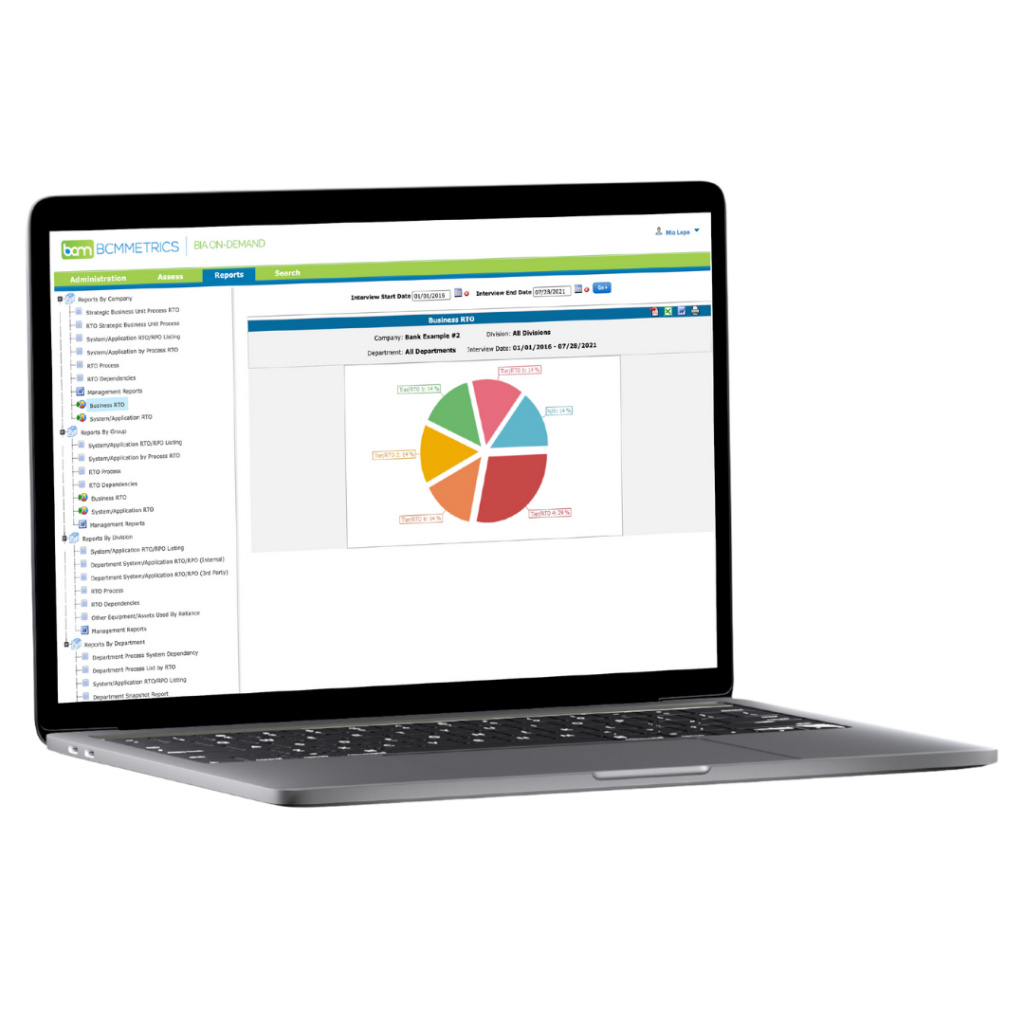What is Risk Mitigation? The Four Types and How to Apply Them

Welcome to our guide to risk mitigation, where we will explore the key concepts, strategies, and best practices to effectively manage and mitigate risks in your organization. Whether you are a seasoned risk professional or new to the field, this guide will provide you with valuable insights and practical tips for implementing a successful risk mitigation plan.
Risk Mitigation: the Definition
When you find a vulnerability in your company, what do you do? Risk mitigation is the action you take to reduce threats and ensure resiliency. When you mitigate risk, you are taking steps to reduce adverse effects.
It is important to remember that mitigating risk is not just about fixing vulnerabilities—it’s also about reducing the impact of any potential threat. When developing a mitigation strategy, it is important to consider how your company will react if something bad happens as well as how you can prevent negative events from happening in the future.
When mitigating risk, developing a strategy that closely relates to and matches your company’s profile is crucial. A proper mitigation strategy will define how you manage each risk
The Four Risk Mitigation Strategies
There are four risk management strategies that are unique to Business Continuity and Disaster Recovery: risk acceptance, risk avoidance, risk limitation, and risk transference.

Risk Acceptance
Risk acceptance does not reduce any effects however it is still considered a strategy. This strategy is a common option when the cost of other risk management options such as avoidance or limitation may outweigh the cost of the risk itself. A company that doesn’t want to spend a lot of money on avoiding risks that do not have a high possibility of occurring will use the risk acceptance strategy.
Risk Avoidance
Risk avoidance is the opposite of risk acceptance. It is the action that avoids any exposure to the risk whatsoever. It’s important to note that risk avoidance is usually the most expensive of all risk mitigation options.
Read more about making an educated move to mitigate risk with avoidance.
Risk Limitation
Risk limitation is the most common risk management strategy used by businesses. This strategy limits a company’s exposure by taking some action. It is a strategy employing a bit of risk acceptance along with a bit of risk avoidance or an average of both. An example of risk limitation would be a company accepting that a disk drive may fail and avoiding a long period of failure by having backups.
Risk Transference
Risk transference is the involvement of handing risk off to a willing third party. For example, numerous companies outsource certain operations such as customer service, payroll services, etc. This can be beneficial for a company if a transferred risk is not a core competency of that company. It can also be used so a company can focus more on its core competencies.
Read more about offloading your risk by transferring it.
So how can I be a leader in Business Continuity Management (BCM) Governance, Risk and Compliance (GRC) and balance my risks and opportunities? All of these four risk mitigation strategies require monitoring. Vigilance is needed so that you can recognize and interpret changes to the impact of that risk.
How to Apply the Four Risk Mitigation Types
Let’s use the risk of a cybersecurity breach as an example of how to apply each of these mitigation strategies:
Avoid the risk: The company can avoid the risk of a cybersecurity breach by refraining from using certain technologies that are vulnerable to hacking or minimizing its usage. The organization can also limit access to certain data or systems to minimize the avenues that a hacker or malicious actor can use to gain access to sensitive information or infrastructure.
Reduce the risk: The company can reduce the risk of a cybersecurity breach by investing in cyber security measures such as encryption, firewalls, and stronger passwords. The company could also conduct security assessments on a regular basis to identify vulnerabilities and patch them in time.
Transfer the risk: The company can transfer the risk of a cybersecurity breach to third-party vendors or external service providers who have specialized expertise in managing cybersecurity risks. By using the services and solutions provided by these vendors, the company can shift some of the risk to them, while maintaining overall oversight of cyber security capabilities through close monitoring and audit.
Accept the risk: Despite all these prevention and safety measures, it may not be possible to eliminate the risk of a cybersecurity breach entirely. In that case, it is important for the organization to accept some level of risk and implement plans to respond effectively to a security incident. This could include response and recovery plans and using technology to detect threats and malicious activity as soon as possible.
By incorporating these four types of risk mitigation, the company can take a comprehensive approach to managing the risk of a cybersecurity breach and be better prepared to prevent, respond, and mitigate this potential threat.
How Do You Start Mitigating Risk?
It’s simple: with a plan. There are a few essential items to include in a risk management plan:
- a list of individual risks
- a rating of each risk based on likelihood and impact
- an assessment of current processes and controls
- a plan of action
Starting from the top and working your way to a plan of action for each individual risk will constitute your risk management plan.
The Corporate Risk Mitigation Checklist
- Gain management support. This gets overlooked a lot, but it’s very important. You have to communicate with management about the importance of assessing (and reassessing) risk and get their buy-in. Otherwise everything else you do will likely be for nothing.
- Identify team members. Who’s going to help you conduct the risk assessment? Needed are a leader, subject matter experts, and technical writers. The SMEs are key; you need to get to the operational leadership to be able to obtain a clear, informed view of the risks facing the company.
- Identify risks. What are the areas externally and internally that pose threats to the organization? Think about natural disasters, technological risks, risks involving single points of failure (whether they reside in equipment or people), and risks arising from your location. For more on identifying risks, see this post on conducting threat and risk assessments.
- Assess and prioritize the risks. Evaluate risks in terms of how severe the impact would be if they occurred and also the likelihood of their occurring. Prioritize in this order:
- High impact and highly likely to occur
- High impact and less likely to occur
- Low impact and highly likely to occur
- Low impact and less likely to occur
- Determine mitigation options. The main risk mitigation options are:
- Avoid the risk (exit activities that bring it on or turn over to a third party)
- Reduce the risk (take steps to reduce the likelihood of a negative event occurring)
- Accept the risk (live with the risk, acknowledging that if the threat occurs the organization will have to bear the consequences)
- Develop the mitigation plan. Work out what approach the company will take to deal with each of its high priority risks.
- Test the plan. Where appropriate, test the mitigation solutions or steps to ensure they are working as intended.
- Implement the plan. Execute on the mitigation plan as developed and tested.
- Monitor the plan. Keep taps on the progress of your implementation as well as on the business environment, which is subject to change.
- Review and update the plan. Repeat steps 3-8 on a continuous basis in recognition of the fact that risk mitigation is not a project but an on-going process.
An additional item that could be added is measuring residual risk, which was discussed in detail in this post from a couple of weeks ago.
Who Defines and Mitigates Risk?
Determining who is responsible for managing and mitigating risk is a critical aspect of the risk management process. This role should be assigned to a specific individual who possesses the necessary qualifications and expertise.
At MHA Consulting, we understand the importance of having a dedicated risk mitigator who is equipped to handle the complexities of risk management. This individual must stay updated with the latest industry standards and best practices to effectively carry out their responsibilities.
The role of the risk mitigator goes beyond simply identifying and analyzing risks. They must also facilitate the risk mitigation process by encouraging active participation from all stakeholders. This may involve managing conflicts and maintaining a sense of collaboration and engagement among different groups.
Guiding these groups towards actionable outcomes is another critical responsibility of the risk mitigator. They must use their expertise and knowledge to steer discussions and decision-making processes in order to achieve effective risk mitigation strategies.
Dealing with uncertainty is an inherent part of the risk management process. The risk mitigator must be adept at navigating uncertain situations and be prepared to make informed, strategic decisions to address evolving risks.
However, it is important to note that managing risk may not be suitable for everyone. It requires a specific skill set and level of expertise. Before assigning someone to the role of risk mitigator, ensure that they are qualified, well-prepared with the necessary details, and supported by management.
By having a qualified and capable risk mitigator in place, your organization can effectively define and mitigate risks, ensuring proactive risk management that aligns with industry standards and best practices.
Further Reading on Mitigating Risk
Accept, avoid, limit, or transfer. These are the options laid before you when it comes to mitigating risk. A risk mitigation plan allows you to reduce and eliminate risk. While organizing your risk strategy may seem uncomplicated, the key in risk mitigation is action – not just writing reports or making lists of action items.
More of our writing on mitigating risk:










Does risk transference negate the company’s exposure and liability should an event occur that causes damage, injury or even death? The BP Mexican Gulf oil platform disaster springs to mind.
Thats a very good question. Risk transference may not always negate exposure if your supplier is negligent in the production of good or operations of a service that you as the company are providing to your customers.
Hello Melissa, the Risk transference should mitigate your risks if you have a properly crafted service level agreement which can be enforced by law. This way, you will be able to trust that the third party will not devote from the minimum requirements.